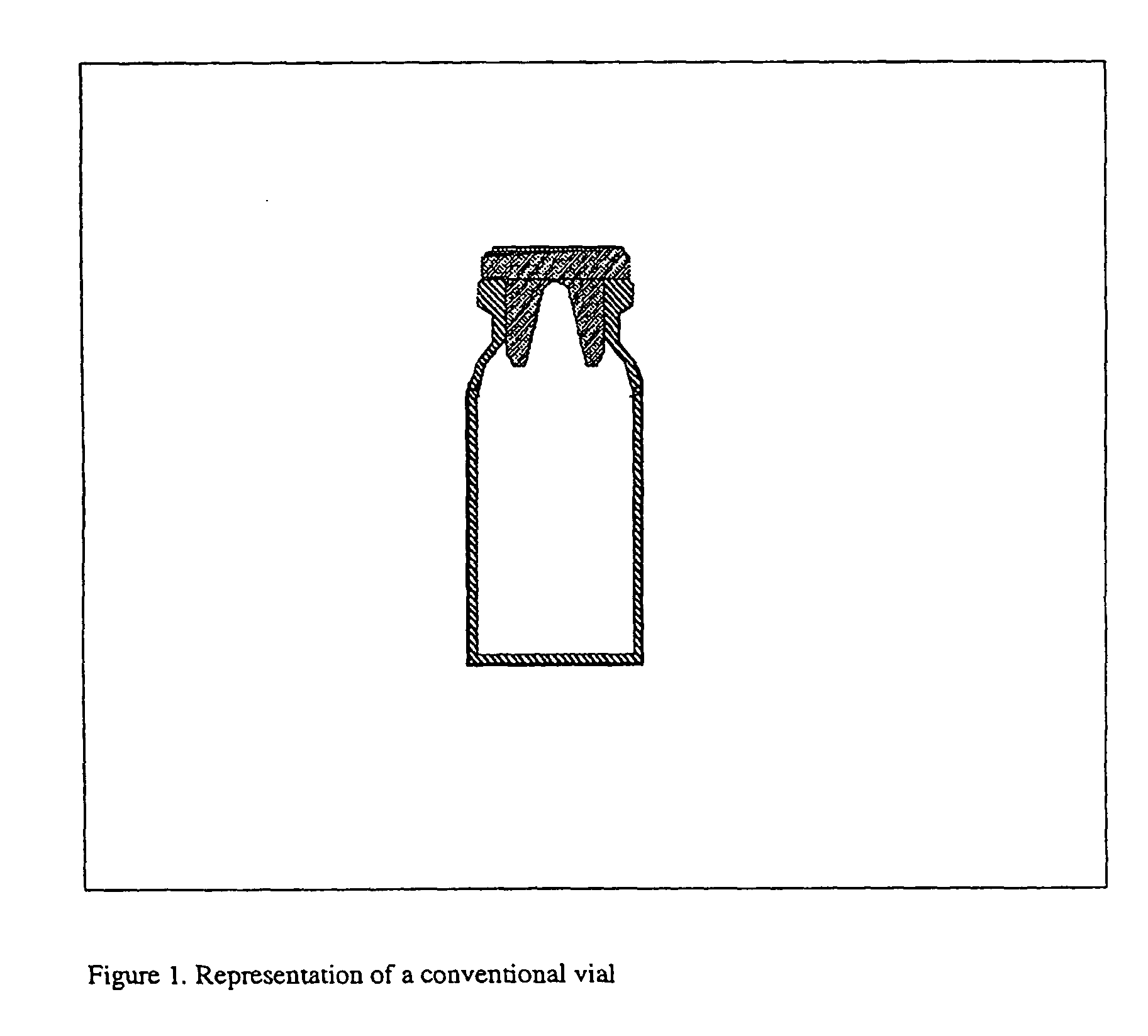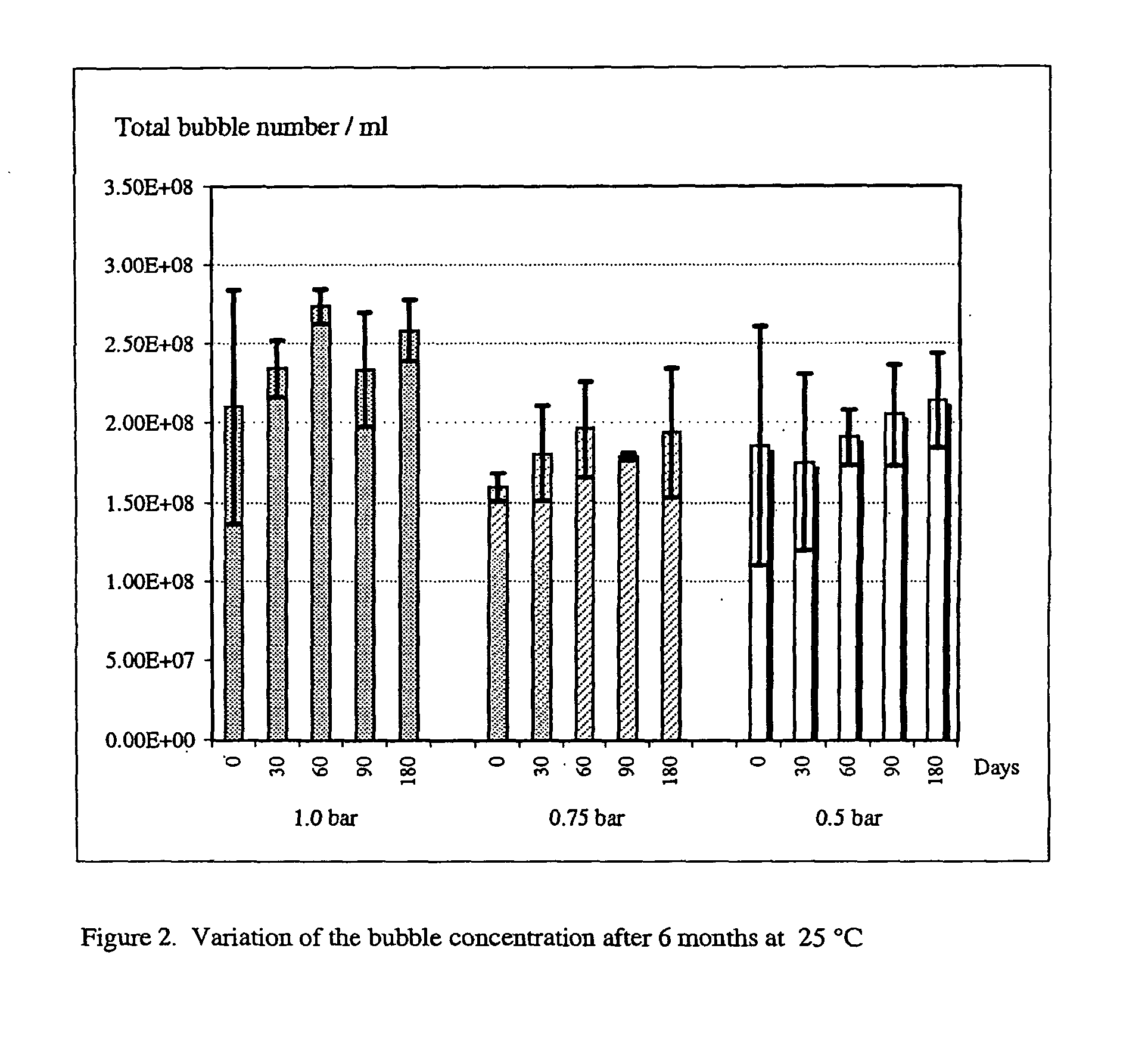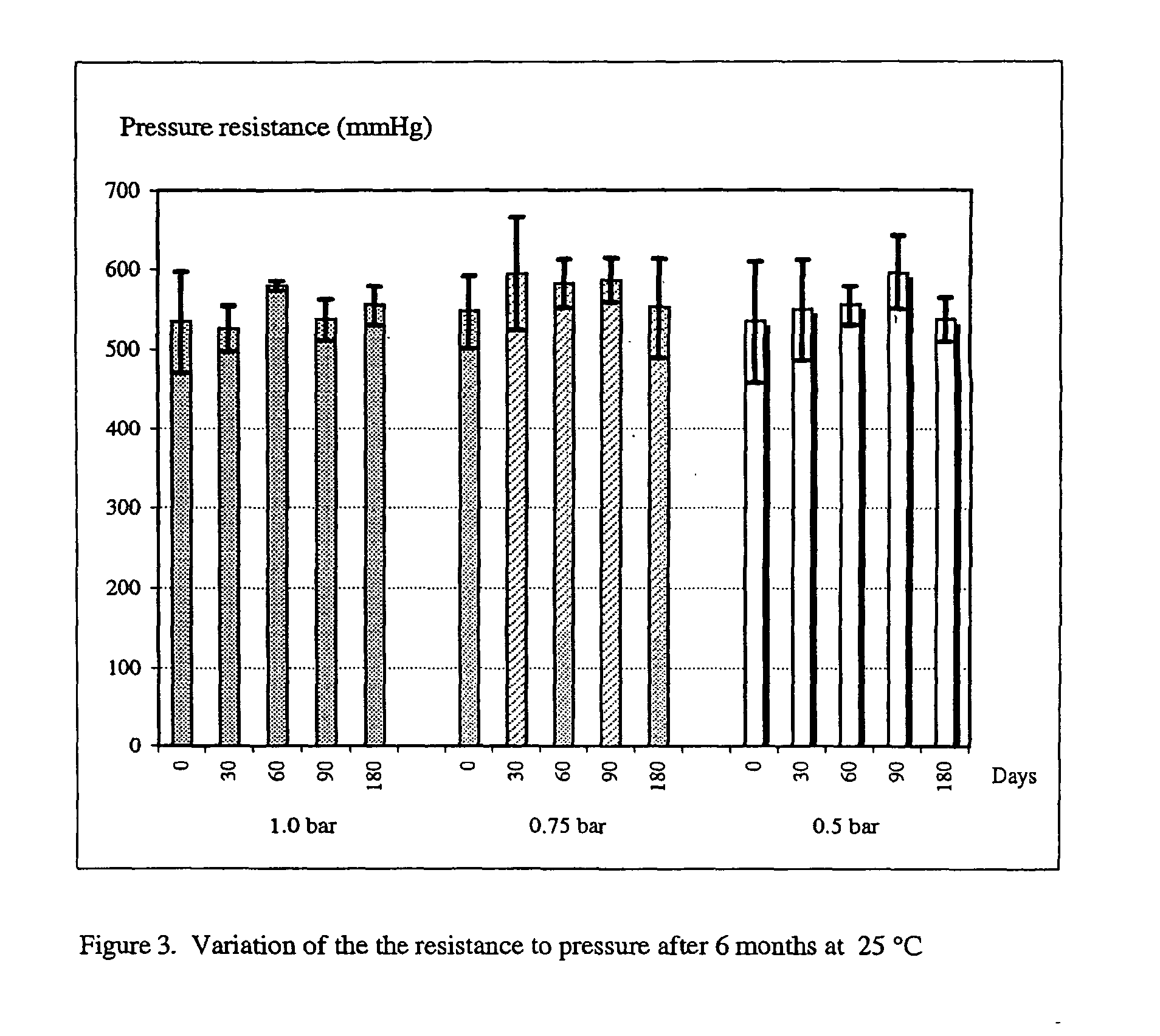Reconstitutable formulation and aqueous suspension of gas-filled microvesicles for diagnostic imaging
a technology of microvesicles and formulations, which is applied in the field of reconstitutable formulations and aqueous suspension of gas-filled microvesicles for diagnostic imaging, can solve the problems of preventing the use of echographic agents in certain applications, difficult reproducibility and analysis of echographic tests, and particularly sensitive storage of microbubbles
- Summary
- Abstract
- Description
- Claims
- Application Information
AI Technical Summary
Benefits of technology
Problems solved by technology
Method used
Image
Examples
example 1
[0105] A solution containing 0.9 g of DPPC and 100 mg of DPPG was prepared with 50 ml of hexane / isopropanol 8 / 2 v / v; (Fluka, Switzerland). The solvents were evaporated to dryness. 20 ml of distilled water were added and the mixture was heated at 65° C. for one hour on a rotavapor apparatus. The resulting suspension was then extruded through successively 3 and 1 μm polycarbonate membranes (Nuclepore®). After cooling, the extruded suspension was mixed with Macrogol 4000 solution (100 mg / ml; Macrogol 4000 is poly (ethylene glycol) with a molecular weight of 4000 and purchased from Clarian, Germany) with a volume ratio of 1:9 (Lipid suspension / Macrogol solution) and rapidly frozen at −45° C. in a round glass flask. The frozen sample was then freeze-dried under vacuum (0.2 mbar) and overnight. Aliquots of the obtained lyophilisate were placed in 10 ml glass vials (450 mg / vial) and sealed with a gas tight stopper. The vials were totally evacuated by high vacuum pump and then filled with C...
example 2
[0107] A series of aqueous phospholipid suspensions were prepared with the following lipid compositions: [0108] A. 25 mg of DAPC, 70 mg of DSPS and 5 mg of DSPE-PEG2000 [0109] B. 45 mg of DSPC, 45 mg of DPPG, 10 mg of palmitic acid [0110] C. 54 mg DPPC, 6 mg DPPA, 40 mg PE-PEG5000 [0111] D. 100 mg of DPPS [0112] E. 90 mg of DPPS, 10 mg of DSPE-PEG2000 [0113] F. 50 mg DPPC, 45 mg DPPS, 5 mg Pluronic® F108 [0114] G. 50 mg of DPPG, 150 mg of Pluronic® F68, 2.5 mg of N-biotinyl Cap-PE [0115] H. 90 mg DSPC, 10 mg TAP
[0116] The components of each composition were dispersed in 50 ml aqueous solution containing 1.5 g of glycerol and 5 g of propylene glycol. All dispersions were heated 1 hour at 75° C. on a rotavapor apparatus for lipid hydration. After cooling, the suspensions were then homogenized under high-speed mechanical agitation using a Polytron® (Kinematica AG, 15'000 rpm and 2 min.) at 5° C. and under C4F10 gas in air. The generated bubble suspensions were introduced in 50 ml syri...
example 3
[0118] A phospholipid mixture containing 27 mg of DPPC, 3 mg of DPPA and 20 mg of DPPE-PEG5000 was dissolved in 18 g of tert-butanol under reflux (82° C.). After dissolution, 3 g of Macrogol 4000 were added. After complete dissolution, aliquots of the solution were filled into 10 ml glass vials (310 μl / vial), frozen at −45° C. and lyophilized. The lyophilisate-containing vials were evacuated by high vacuum pump, filled with various gases (see below) under different absolute gas pressures (100, 300, 500, 700 and 1000 mbar) and sealed with gas tight stoppers. The lyophilisate samples were reconstituted with 5 ml saline solution (injected through the stopper) by vigorous shaking to generate gas microbubbles. Coulter counter analyses were performed and the results are presented in Table 3. The concentration of gas microbubbles prepared at 300, 500 and 700 mbar are expressed as relative bubble concentrations, normalized with the values obtained from samples prepared at 1000 mbar (atmosph...
PUM
 Login to View More
Login to View More Abstract
Description
Claims
Application Information
 Login to View More
Login to View More - R&D
- Intellectual Property
- Life Sciences
- Materials
- Tech Scout
- Unparalleled Data Quality
- Higher Quality Content
- 60% Fewer Hallucinations
Browse by: Latest US Patents, China's latest patents, Technical Efficacy Thesaurus, Application Domain, Technology Topic, Popular Technical Reports.
© 2025 PatSnap. All rights reserved.Legal|Privacy policy|Modern Slavery Act Transparency Statement|Sitemap|About US| Contact US: help@patsnap.com



